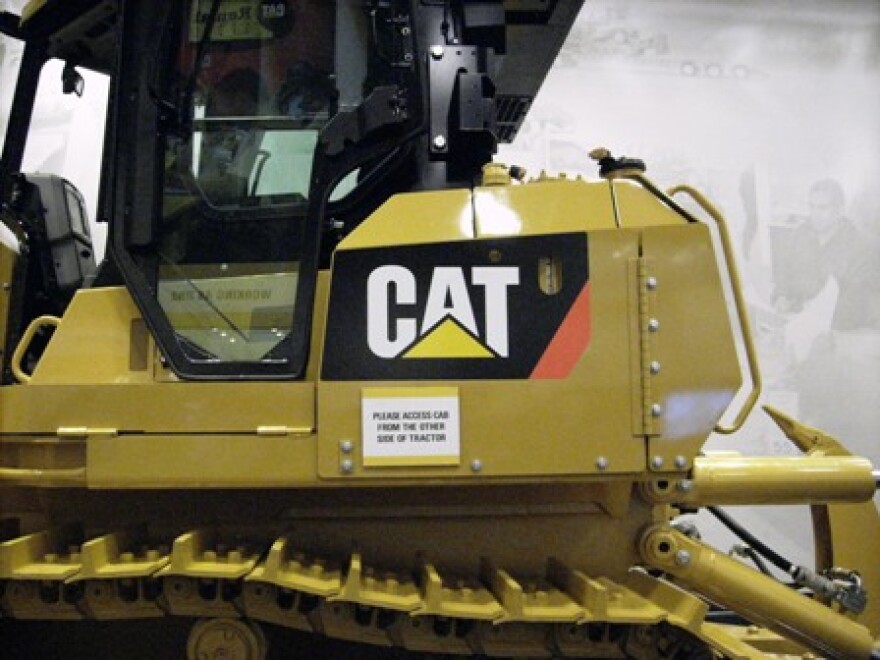U.S. companies are leaving China thanks to the trade war, noted the business magazine Forbes earlier this year. Would Caterpillar Inc., which has doing business in the country since 1975, ever consider such a move?
The company isn’t commenting about its future in China beyond what CEO Jim Umpleby said in last month’s earnings call with analysts.
“Yes, there are competitive pressures in China. We're confident in our ability to compete in China long term, continue to expand our products and our dealers are well-positioned,” Umpleby said on the call.
But deteriorating relations between the U.S. and China, accompanied by White House calls for a corporate retreat from the country, have analysts like David Trainer suggesting that, in the unlikely event of a break between the two nations, Caterpillar could divest itself of the Asian country where it now has 27 plants operating.
“The COVID-19 pandemic has put a spotlight on already strained relations between the U.S. and China,” Trainer wrote in Barron’s in June. “The widespread support for the Holding Foreign Companies Accountable Act is the latest sign of rising tension between the two countries.”
“For more than 40 years, Caterpillar has been selling its products in China. Last year, Asia/Pacific was Caterpillar’s second largest market, but experienced a 4 percent decline in sales as the U.S. enacted tariffs in its trade war with China,” continued Trainer.
“While more difficulty in Asia/Pacific could be on the horizon for the firm, Caterpillar’s exposure to the region, particularly China, is limited. China, itself accounts for 5-10% of Caterpillar’s total sales,” he stated.
But Mark Grywacheski, an analyst with the Quad Cities Investment Group in Davenport, Iowa, suggests the company would have more to lose than business with Chinese customers by pulling out.
“First of all, I don’t think 10% is an inconsequential amount. To leave the world’s second-largest economy, Caterpillar would have to be prepared to tell shareholders how it would replace those revenues,” said Grywacheski.
“Second, China is a piece of a much-larger puzzle. China is the massive hub for the company to service the broader Asia Pacific region,” he said, referring to countries such as Indonesia, India, Japan, Singapore and South Korea.
The Asia Pacific region makes up almost a quarter of Caterpillar’s total revenue, said Grywacheski.
Growing volatility in China was cited in a recent report by Kearney, a Chicago-based consulting firm: “Three decades ago, U.S. producers began manufacturing and sourcing in China for one reason: costs. The trade war brought a second dimension more fully into the equation―risk―as tariffs and the threat of disrupted China imports prompted companies to weigh surety of supply more fully alongside costs,” the report stated.
“COVID-19 brings a third dimension more fully into the mix, and arguably to the fore: resilience―the ability to foresee and adapt to unforeseen systemic shocks,” said the Kearney report.
Trainer doesn’t see losing China as a trading partner as a devastating blow for Caterpillar. He even suggests that exiting China could actually be beneficial.
“(Caterpillar) would likely see some of its lost revenue in China offset by additional demand for its products and services as other businesses around the world would increase their capital expenditures as a result of relocating operations away from China,” noted Trainer.
“Given China's reluctance to play by the same intellectual property and trade rules as other developed countries, the United States is not left with much choice but to reduce dependence on and exposure to the country,” he said.
We’re living in unprecedented times when information changes by the minute. WCBU will continue to be here for you, keeping you up-to-date with the live, local and trusted news you need. Help ensure WCBU can continue with its in-depth and comprehensive COVID-19 coverage as the situation evolves by making a contribution.

